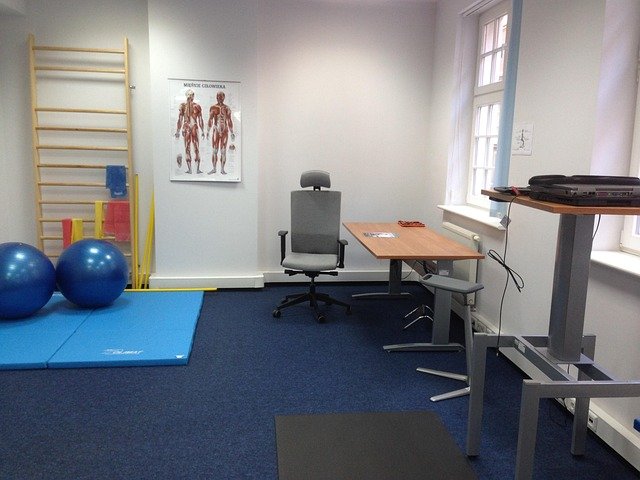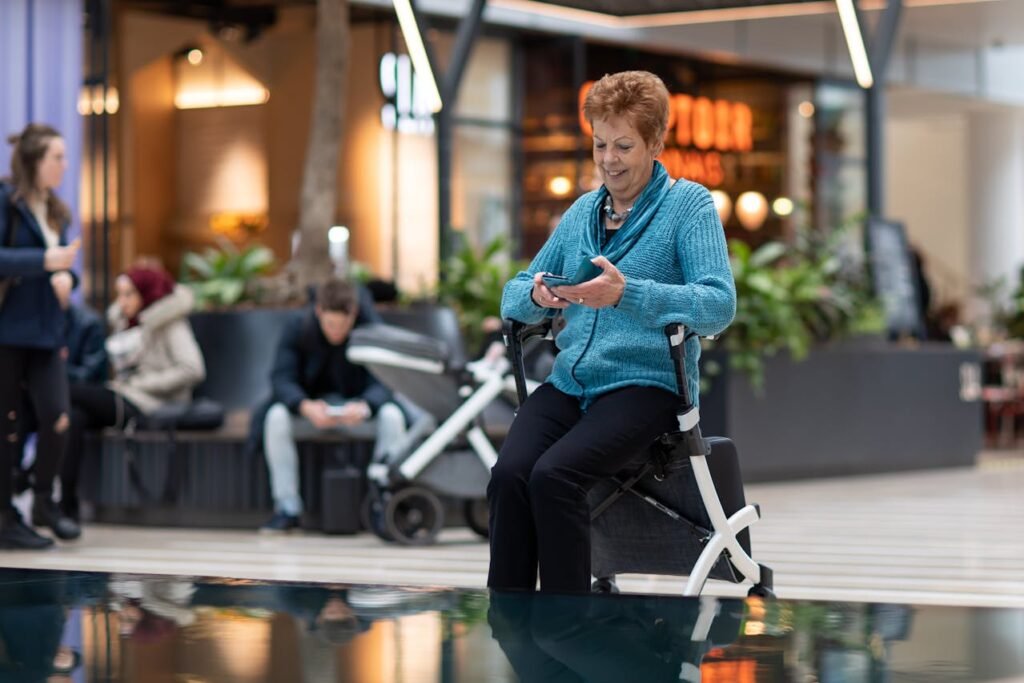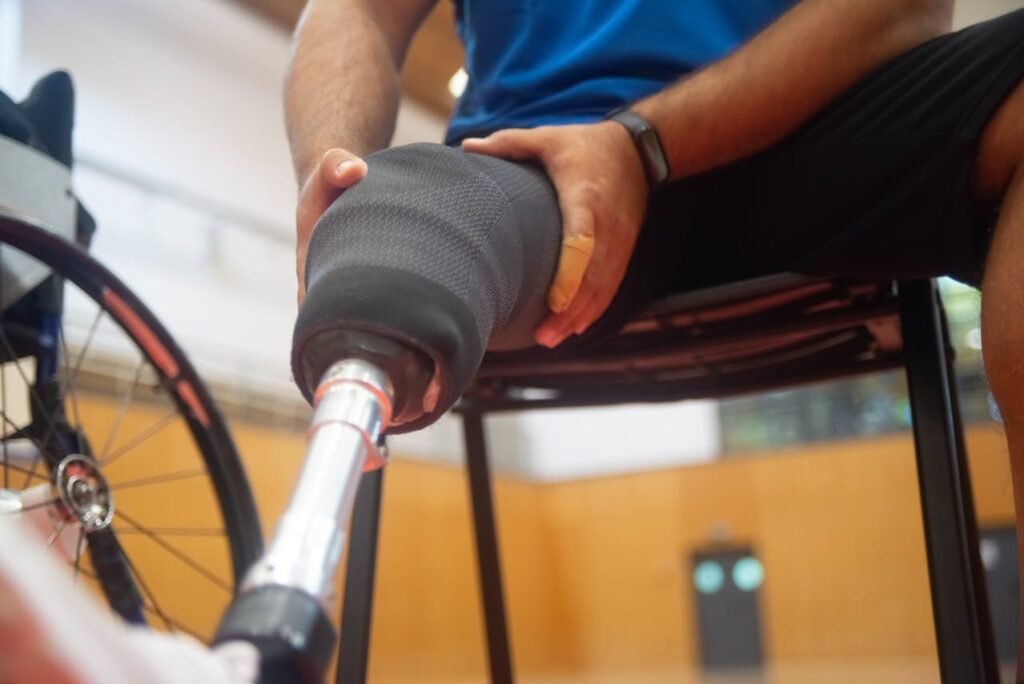Phantom pain can be one of the hardest parts of living with limb loss. Even after healing, the brain continues to send signals to the missing part—creating sensations that feel painfully real. For seniors using prosthetic limbs, these moments can come without warning: a sudden ache, a burning pulse, or a tingling that seems to come from nowhere.
The good news is that relief is possible. With gentle, consistent methods, many seniors learn to calm their nerves, ease the sensations, and regain control over their comfort. These methods aren’t about forcing pain away—they’re about teaching the body and brain to work together again, peacefully.
At RoboBionics, we’ve worked closely with prosthetic users across India who’ve faced phantom pain with courage and patience. Over time, we’ve seen that the most effective solutions are often the simplest—rooted in awareness, movement, and compassion for your own body.
This guide will walk you through practical, low-effort methods to reduce phantom pain naturally. From physical relaxation techniques to sensory and emotional care, every idea here is designed to bring gentle comfort to your everyday life.
Understanding Phantom Pain
What Phantom Pain Really Is

Phantom pain is the sensation of discomfort, pressure, or pain that feels like it’s coming from a limb that is no longer there. It can feel sharp, dull, burning, cramping, or even like a sudden electric shock.
These sensations are not imaginary—they come from your brain and nerves, which still remember your missing limb. The brain continues to send messages to that area, even though it no longer exists physically.
For many seniors, these signals can appear unexpectedly. They might come at night, after a long day of activity, or during quiet moments when the body relaxes.
Understanding that phantom pain is a real, neurological response—not a sign of weakness—helps you approach it calmly and confidently.
Why Phantom Pain Happens
Your brain has a “map” of your body called the sensory cortex. When a limb is lost, that map doesn’t change right away. The nerves connected to that limb still send signals, confusing your brain into thinking the limb is still there.
This confusion can cause pain or unusual sensations. Over time, your brain can learn to rewire these signals—but that process takes patience and gentle retraining.
Factors like stress, fatigue, poor sleep, or ill-fitting prosthetics can make phantom pain worse. But with proper awareness and care, these triggers can be managed effectively.
The Emotional Connection
Phantom pain isn’t only physical—it’s emotional too. Many seniors describe it as a reminder of loss, or as a feeling that their body is still trying to “find” itself.
Emotional stress, grief, or anxiety can amplify pain signals. That’s why managing phantom pain often involves both the body and the mind.
The goal is not to fight the pain, but to teach your body to relax and reprogram how it feels sensations. Calmness, movement, and gentle focus can gradually retrain your nervous system to quiet these signals.
Common Myths About Phantom Pain
A common myth is that phantom pain never goes away. In reality, for most people, it becomes milder and less frequent with time and consistent care.
Another myth is that only medication helps. While medicines can be useful for severe cases, many non-drug methods work just as effectively when practiced regularly.
Simple techniques like mirror therapy, massage, breathing, and mindfulness have helped thousands of seniors find relief naturally.
Understanding the truth behind phantom pain helps remove fear and builds confidence in managing it day by day.
Gentle Physical Methods for Relief
Massage and Touch Therapy

Touch is one of the most powerful tools for soothing phantom pain. Gentle massage helps calm overactive nerves and increase blood flow to the surrounding areas.
Use soft circular motions around your residual limb—not on open or irritated skin. Even light rubbing or tapping can help your brain adjust its focus from pain to comfort.
If you prefer, use a warm towel or soft cloth to apply light pressure. The goal is not to “fix” the area but to remind your brain that your limb is safe and relaxed.
Regular daily touch helps reduce pain intensity and improves how your prosthesis feels when you wear it.
Warm Compress or Heat Therapy
Warmth relaxes tight muscles and improves circulation, which can ease phantom pain. Apply a warm (not hot) towel or heating pad around your residual limb for 10–15 minutes.
This gentle warmth helps nerves calm down and reduces sharp, electric-like sensations.
Be sure to test the temperature first to avoid burns, especially if your skin is sensitive. Warmth should always feel soothing, never uncomfortable.
Gentle Stretching and Movement
When your body stays still for too long, nerves can become tense. Simple stretching or mild movement of your residual limb can help release that tension.
If possible, move your limb slowly in circular motions or practice light leg or arm exercises as recommended by your physiotherapist.
These small movements increase blood flow and remind your brain that your body is active and balanced.
If movement is limited, even shifting posture or breathing deeply during stretches can make a difference.
Mirror Therapy
Mirror therapy is one of the most effective gentle methods for phantom pain. It uses a mirror to “trick” the brain into seeing your missing limb as present and moving normally.
Sit comfortably and place a mirror beside your sound limb, facing inward so that it reflects the image of your existing limb. As you move that limb, focus on the reflection—it will look like your missing limb is moving too.
Your brain starts to adjust its perception, reducing the confused signals that cause pain.
Many seniors find that even five to ten minutes of mirror therapy daily helps reduce discomfort over time.
Gentle Vibration and Tapping
Vibration therapy can help distract the brain from phantom sensations. Using a handheld massager on low settings or lightly tapping the area around your residual limb can calm nerve activity.
The gentle rhythm of tapping or vibration provides new, harmless sensory input that competes with the pain signals in your brain.
Always keep the motion soft and brief—just enough to create a soothing, repetitive feeling.
If you feel relief, repeat this technique once or twice a day to reinforce the calming effect.
Breathing and Relaxation Techniques
Why Breathing Helps
Phantom pain often feels stronger when you’re anxious or tense. Shallow breathing keeps your body in a state of alertness, making nerves more sensitive.
Deep, slow breathing helps lower that tension and signals your brain to relax. This change in rhythm also improves oxygen flow, which calms the nervous system and reduces pain intensity.
Practicing relaxed breathing daily can make a huge difference, even outside pain episodes.
The Slow Exhale Technique
Sit in a quiet place where you can relax your shoulders. Inhale deeply through your nose for four seconds, hold briefly, and exhale slowly through your mouth for six seconds.
This longer exhale activates the body’s natural relaxation response. Repeat this rhythm for a few minutes until you feel calmer.
It’s simple but powerful. The key is consistency—using this breath whenever discomfort starts.
Breathing with Visualization
Add visualization to your breathing to help redirect your brain. As you inhale, imagine warm light filling your body. As you exhale, picture that light gently washing away the pain.
This combination of breath and imagination helps you control where your attention goes.
Even a few minutes of this mindful practice can shift your focus away from pain toward calm awareness.
Progressive Muscle Relaxation
This technique helps your brain reconnect calmly with your body. Start by tightening the muscles in your shoulders for a few seconds, then relax.
Next, move to your arms, stomach, and legs—contracting gently and then releasing. Pay attention to how your body feels lighter after each release.
This exercise teaches your nervous system the difference between tension and relaxation. Over time, it helps you release the tightness that often accompanies phantom sensations.
The Power of Stillness
Sometimes, all your body needs is stillness. Sit comfortably, close your eyes, and focus on one area—your breath, your heartbeat, or the quiet around you.
Don’t try to stop pain or push it away. Just notice it calmly without reacting.
This practice of awareness helps reduce the emotional charge of pain, making it feel less controlling. With time, your mind learns to observe discomfort instead of fearing it.
Mind-Based Pain Control Techniques
Understanding the Brain’s Role in Pain

Phantom pain begins in the brain, not the body. When nerves send confusing messages after limb loss, the brain interprets them as pain even though the limb is gone.
This means your thoughts, emotions, and focus can either calm or amplify what you feel. Learning to manage how your brain reacts helps reduce pain intensity over time.
This isn’t about ignoring pain—it’s about guiding your brain to process it differently, gently and consistently.
Mindfulness and Awareness
Mindfulness simply means being present without judgment. When phantom pain appears, instead of reacting with frustration or fear, take a breath and notice what’s happening calmly.
You can silently say to yourself, “This is a sensation, and it will pass.” Shifting your focus from fear to observation helps break the cycle of tension.
The more you practice awareness, the more control you gain. Your body learns that pain is temporary, not something to resist or fear.
Guided Imagery
Guided imagery uses imagination to send positive signals to your nervous system. Close your eyes and picture your body at peace—balanced, warm, and calm.
Imagine your limb as whole and pain-free, surrounded by comfort.
Your brain doesn’t distinguish much between imagination and reality, so this visualization helps retrain how it perceives your body.
Even five minutes of guided imagery each day can reduce pain frequency and make your prosthetic experience smoother.
Music and Sound Therapy
Sound has a direct effect on mood and brain activity. Listening to soothing music, nature sounds, or rhythmic breathing tones can reduce nerve sensitivity and anxiety.
You can combine soft music with relaxation exercises or use it before sleep. Music creates harmony in your brain—quieting overactive signals that trigger pain.
Some seniors even find relief using white noise or soft humming while resting. The goal is to replace the pain’s intensity with something peaceful and rhythmic.
Distraction and Focus Shifts
Pain demands attention. The more you focus on it, the stronger it feels. Shifting your attention to something engaging—like reading, knitting, gardening, or solving puzzles—helps the brain move away from pain processing.
These activities don’t erase pain instantly, but they redirect your awareness. Over time, your mind learns to prioritize comfort over discomfort.
The key is gentle engagement—something enjoyable enough to hold your attention without straining your body.
Lifestyle Adjustments for Phantom Pain Relief
Staying Active with Purpose
Movement keeps blood flowing, strengthens your muscles, and helps your brain form healthy new patterns.
Even gentle activities like walking with your prosthesis, doing chair exercises, or practicing slow stretches can ease nerve tension.
When your body moves smoothly, your brain receives positive feedback about balance and control. This reduces the confusion that triggers phantom sensations.
Healthy Sleep Habits
Poor sleep makes pain worse. When you’re tired, your nerves become more reactive, and your brain loses some of its ability to regulate discomfort.
Establish a calming nighttime routine. Avoid heavy meals, caffeine, or screen time before bed. Keep your room cool and dark.
If phantom pain interrupts your sleep, practice slow breathing or gentle massage. Relaxation helps the brain shift from alertness to rest.
Over time, better sleep brings fewer pain episodes and faster healing.
Hydration and Balanced Diet
Dehydration and nutrient deficiencies can make nerves more sensitive. Drink plenty of water throughout the day and eat foods rich in vitamins and minerals.
Fresh fruits, vegetables, nuts, and whole grains support nerve and muscle health. Omega-3 fats from foods like flaxseeds or fish help reduce inflammation.
A balanced diet supports both body and mind, giving your nervous system the strength to recover and adapt.
Managing Stress
Stress is one of the biggest triggers for phantom pain. When you’re anxious, your body produces hormones that tighten muscles and increase nerve activity.
Set aside time each day to relax. Meditation, breathing, or even sitting quietly in the sun can lower stress.
You don’t need long sessions—just a few peaceful minutes can reset your mood and reduce pain flare-ups.
Proper Prosthetic Fit and Maintenance
A poor prosthetic fit can trigger physical and nerve irritation. If your socket feels too tight, loose, or causes pressure marks, it may worsen phantom sensations.
Visit your prosthetist regularly to ensure everything fits correctly. Even small adjustments can prevent unnecessary nerve stimulation.
Keep your liner and socket clean and smooth. Consistent maintenance ensures that your prosthesis feels secure and comfortable.
Emotional and Mental Healing
Accepting and Understanding the Process
Living with limb loss means adjusting both physically and emotionally. Phantom pain can sometimes feel like a reminder of what was lost, which can be emotionally heavy.
The first step to healing is acceptance—not resignation, but acknowledgment. Understanding that phantom pain is part of your body’s recovery helps you respond with patience, not frustration.
You’re not broken. Your body is simply relearning a new way to feel whole again.
Talking About It Helps
Pain feels heavier when it’s silent. Sharing your experience with family, friends, or other prosthetic users lightens that emotional load.
Support groups, in person or online, offer comfort and understanding from people who know exactly how it feels.
If phantom pain affects your mood or sleep, talking with a counselor can also help. Emotional support is part of physical healing—it keeps your mind steady while your body adapts.
Keeping a Pain Journal
Tracking your pain helps identify triggers and progress. Note when the pain happens, what it feels like, and what helps reduce it.
Patterns often emerge—perhaps pain appears more during stress or after long walks. Once you recognize these patterns, you can plan ahead and adjust your habits.
Writing also has a therapeutic effect. It allows your emotions to flow out instead of staying trapped in your thoughts.
Practicing Gratitude and Positivity
Focusing on small, positive moments retrains your brain’s emotional pathways. Start or end your day by noting three things you’re thankful for—no matter how small.
This habit strengthens resilience and helps your brain focus less on pain and more on progress.
Over time, gratitude creates calmness—a gentle antidote to frustration and fatigue.
Redefining Comfort and Progress
For many seniors, the goal isn’t to eliminate phantom pain completely—it’s to make life easier and more comfortable day by day.
Progress can be subtle: fewer episodes, shorter duration, or milder sensations. Celebrate these wins. Each sign of improvement shows your brain is healing.
Comfort grows slowly, but every moment of relief counts.
Combining Physical and Emotional Techniques
Building a Personal Routine

Relief doesn’t come from one single method—it comes from small, consistent efforts that support each other.
Combine physical care (massage, movement, warmth) with emotional habits (breathing, relaxation, reflection). Together, they form a balanced daily routine.
Try different techniques and notice what feels best for you. Your body will naturally respond to what brings peace.
Timing Matters
Practicing gentle methods at the right times enhances their effect.
Morning stretches prepare your body for the day. Afternoon relaxation breaks keep nerves calm. Evening breathing exercises prepare you for restful sleep.
Creating this rhythm helps your body feel safe and predictable—reducing phantom pain episodes.
Listening to Your Body
Your body gives clues before pain grows stronger. Tingling, tightness, or heaviness can mean your nerves are becoming active.
When you notice these signs, take a short break, stretch, or do a quick breathing exercise. Acting early prevents pain from escalating.
This awareness helps you stay in control and prevents frustration.
Working with Professionals
Never hesitate to reach out for help. Your prosthetist, physiotherapist, or doctor can adjust your care plan and recommend therapies tailored to your condition.
Some clinics also offer advanced non-invasive options like electrical nerve stimulation or laser therapy. These complement the gentle methods you practice at home.
Professional guidance ensures your routine stays safe and effective as your body changes.
Long-Term Relief and Care
Patience Brings Progress
Phantom pain relief is gradual. It might lessen for weeks and then return unexpectedly. These ups and downs are part of the healing process.
Be patient. Every practice, every calm breath, and every gentle massage teaches your brain new, healthier patterns.
With consistency, pain episodes grow shorter and less intense. Over time, your body and mind find their natural balance again.
Building Daily Calm
Stress-free living is a skill that can be cultivated. Small habits like taking slow walks, listening to music, or spending time outdoors all help.
These moments of calm are not luxuries—they’re medicine for your nervous system.
The more peace you create in your day, the less space pain finds to grow.
Adapting Over Time
Your body changes with age, and so does your response to pain. What works today might need adjusting later. Stay open to change.
Update your routines, adjust your prosthesis, and explore new techniques as needed. Flexibility keeps progress steady.
Long-term comfort is about evolving care—not one fixed solution.
Partnering with RoboBionics for Holistic Support
At RoboBionics, we believe healing goes beyond technology. Our prosthetics are designed to move naturally with your body and reduce unnecessary pressure, helping to minimize discomfort.
We work closely with seniors across India, offering personalized fittings and rehabilitation guidance for better comfort and nerve balance.
Our goal is simple: to help you move freely and live fully—without letting phantom pain control your life.
If you’d like to learn more about our prosthetic solutions or book a personalized demo, visit robobionics.in/bookdemo.
Relief begins with understanding, patience, and gentle care—and we’ll be with you every step of the way.



